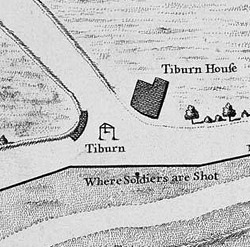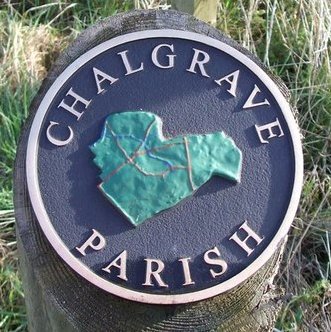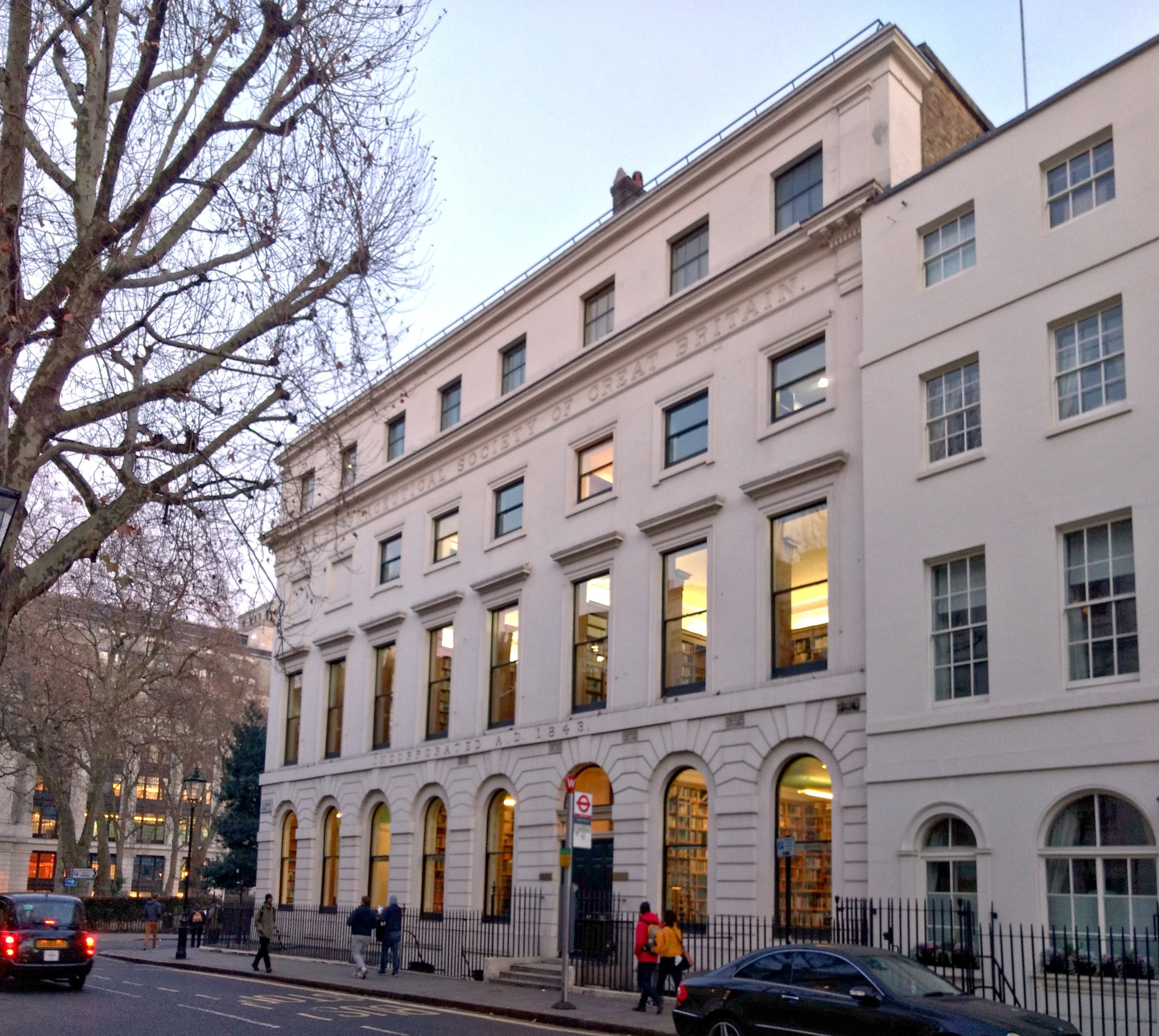|
William Dodd (priest)
William Dodd (29 May 1729 – 27 June 1777) was an English Anglicanism, Anglican clergyman and a man of letters. He lived extravagantly, and was nicknamed the "macaroni (fashion), Macaroni Parson". He dabbled in forgery in an effort to clear his debts, and was caught and convicted. Despite a public campaign for a Royal pardon, in which he received the assistance of Samuel Johnson, he was hanged at Tyburn for forgery. Biography Early life Dodd was born in Bourne, Lincolnshire, Bourne in Lincolnshire, the son of the local vicar. He attended Clare College, Clare Hall in the University of Cambridge from 1745 to 1750, where he achieved academic success and graduated as a Wrangler (University of Cambridge), wrangler. He then moved to London, where his spendthrift habits soon left him in debt. He married impulsively on 15 April 1751, to Mary Perkins, daughter of a domestic servant, leaving his finances in an even more precarious position. Priesthood At the urging of his concerned ... [...More Info...] [...Related Items...] OR: [Wikipedia] [Google] [Baidu] |
Tyburn, London
Tyburn was a Manorialism, manor (estate) in London, Middlesex, England, one of two which were served by the parish of Marylebone. Tyburn took its name from the Tyburn Brook, a tributary of the River Westbourne. The name Tyburn, from Teo Bourne (stream), Bourne, means 'boundary stream'.Gover, J. E. B., Allen Mawer and F. M. Stenton ''The Place-Names of Middlesex''. Nottingham: English Place-Name Society, The, 1942: 6. The parish, and probably therefore also the manor, was bounded by Roman roads to the west (modern Edgware Road) and south (modern Oxford Street). The junction of these was the site of the famous Tyburn Gallows (known colloquially as the "Tyburn Tree"), now occupied by Marble Arch. For many centuries the name Tyburn was synonymous with capital punishment: it was the principal place for execution for London and Middlesex criminals and convicted Treason, traitors, including many religious martyrs. In the 18th century it was also known as "God's Tribunal". Hangings at ... [...More Info...] [...Related Items...] OR: [Wikipedia] [Google] [Baidu] |
St Olave Hart Street
St Olave's Church, Hart Street, is a Church of England church in the City of London, located on the corner of Hart Street and Seething Lane near Fenchurch Street railway station. John Betjeman described St Olave's as "a country church in the world of Seething Lane."John Betjeman, ''City of London Churches'' (London: Pitkin Publishing, 1993), . The church is one of the smallest in the city and is one of only a handful of medieval City churches that escaped the Great Fire of London in 1666.Christopher Hibbert, Benjamin Weinreb, Julia Keay and John Keay, ''The London Encyclopaedia, 3rd Revised Edition'' (London: Macmillan, 2008), pages 802803. In addition to being a local parish church, St Olave's is the Ward Church of the Tower Ward of the City of London.St. Olave's Church Website . Retrieved 11 December 2009. < ...
|
Chalgrave
Chalgrave is a civil parish in the Central Bedfordshire district of Bedfordshire, England. The hamlets of Tebworth and Wingfield are in the west of the parish, with the church and manor in the east. Nearby places are Toddington (to the north), Chalton (to the east), Houghton Regis (to the south), and Hockliffe (to the west). Before 1929, the parish also included part of the village of Hockliffe.Stephen Coleman, ''Chalgrave'', Bedfordshire County Council (Bedfordshire Parish Surveys, Historic Landscape and Archaeology, 6), 1986, , pp. 7, 15, 17-22. Chalgrave is part of the ward of 'Heath and Reach' which sends a Councillor to Central Bedfordshire Council. The ward includes the villages of Heath and Reach, Hockliffe, Eggington, Stanbridge, Tilsworth, Tebworth, and Wingrave. The ward was created in 2011 and has since been represented by Councillor Mark Versallion. Origins The name is derived from the Old English calc-græf''', meaning a chalk trench. A charter dated 926 AD ... [...More Info...] [...Related Items...] OR: [Wikipedia] [Google] [Baidu] |
Hockliffe
Hockliffe is a village and civil parish in Bedfordshire on the crossroads of the A5 road which lies upon the course of the Roman road known as Watling Street and the A4012 and B5704 roads. It is about east of Leighton Buzzard. Nearby places are Heath and Reach, Eggington, Stanbridge, Battlesden, Toddington, Tebworth and Tilsworth. Hockliffe is in Heath and Reach ward which sends a councillor to Central Bedfordshire Council. The ward includes the villages of Heath and Reach, Hockliffe, Eggington, Stanbridge, Tilsworth, Tebworth and Wingrave. The ward was created in 2011 and has since been represented by Councillor Mark Versallion. Clipstone Brook There was a term applied from the 18th century which was "as straight as Hockley Brook" because of the meandering bends of the said brook. The correct name of the brook is the Clipstone Brook. The first field (though in the parish of Chalgrave) is still known by locals as the Old Ride, due to the original crossing of the broo ... [...More Info...] [...Related Items...] OR: [Wikipedia] [Google] [Baidu] |
Rector (ecclesiastical)
A rector is, in an ecclesiastical sense, a cleric who functions as an administrative leader in some Christian denominations. In contrast, a vicar is also a cleric but functions as an assistant and representative of an administrative leader. Ancient usage In ancient times bishops, as rulers of cities and provinces, especially in the Papal States, were called rectors, as were administrators of the patrimony of the Church (e.g. '). The Latin term ' was used by Pope Gregory I in '' Regula Pastoralis'' as equivalent to the Latin term ' (shepherd). Roman Catholic Church In the Roman Catholic Church, a rector is a person who holds the ''office'' of presiding over an ecclesiastical institution. The institution may be a particular building—such as a church (called his rectory church) or shrine—or it may be an organization, such as a parish, a mission or quasi-parish, a seminary or house of studies, a university, a hospital, or a community of clerics or religious. ... [...More Info...] [...Related Items...] OR: [Wikipedia] [Google] [Baidu] |
Bloomsbury
Bloomsbury is a district in the West End of London, part of the London Borough of Camden in England. It is considered a fashionable residential area, and is the location of numerous cultural institution, cultural, intellectual, and educational institutions. Bloomsbury is home of the British Museum, the largest museum in the United Kingdom, and several educational institutions, including University College London and a number of other colleges and institutes of the University of London as well as its central headquarters, the New College of the Humanities, the University of Law, the Royal Academy of Dramatic Art, the British Medical Association and many others. Bloomsbury is an intellectual and literary hub for London, as home of world-known Bloomsbury Publishing, publishers of the ''Harry Potter'' series, and namesake of the Bloomsbury Group, a group of British intellectuals which included author Virginia Woolf, biographer Lytton Strachey, and economist John Maynard Keynes. Bloo ... [...More Info...] [...Related Items...] OR: [Wikipedia] [Google] [Baidu] |
Pimlico
Pimlico () is a district in Central London, in the City of Westminster, built as a southern extension to neighbouring Belgravia. It is known for its garden squares and distinctive Regency architecture. Pimlico is demarcated to the north by London Victoria station, Victoria Station, by the River Thames to the south, Vauxhall Bridge Road to the east and the former Grosvenor Canal to the west. At its heart is a grid of residential streets laid down by the planner Thomas Cubitt, beginning in 1825 and now protected as the Pimlico Conservation Area. The most prestigious are those on garden squares, with buildings decreasing in grandeur away from St George's Square, Warwick Square, Eccleston Square and the main thoroughfares of Belgrave Road and St. George's Drive. Additions have included the pre–World War II Dolphin Square and the Churchill Gardens and Lillington and Longmoore Gardens estates, now conservation areas in their own right. The area has over 350 Listed building, Grade ... [...More Info...] [...Related Items...] OR: [Wikipedia] [Google] [Baidu] |
Lottery
A lottery (or lotto) is a form of gambling that involves the drawing of numbers at random for a prize. Some governments outlaw lotteries, while others endorse it to the extent of organizing a national or state lottery. It is common to find some degree of regulation of lottery by governments. The most common regulations are prohibition of sale to minors and licensing of ticket vendors. Although lotteries were common in the United States and some other countries during the 19th century, by the beginning of the 20th century, most forms of gambling, including lotteries and sweepstakes, were illegal in the U.S. and most of Europe as well as many other countries. This remained so until well after World War II. In the 1960s, casinos and lotteries began to re-appear throughout the world as a means for governments to raise revenue without raising taxes. Lotteries come in many formats. For example, the prize can be a fixed amount of cash or goods. In this format, there is risk to the org ... [...More Info...] [...Related Items...] OR: [Wikipedia] [Google] [Baidu] |
Pound Sterling
Sterling (symbol: £; currency code: GBP) is the currency of the United Kingdom and nine of its associated territories. The pound is the main unit of sterling, and the word '' pound'' is also used to refer to the British currency generally, often qualified in international contexts as the British pound or the pound sterling. Sterling is the world's oldest currency in continuous use since its inception. In 2022, it was the fourth-most-traded currency in the foreign exchange market, after the United States dollar, the euro, and the Japanese yen. Together with those three currencies and the renminbi, it forms the basket of currencies that calculate the value of IMF special drawing rights. As of late 2022, sterling is also the fourth most-held reserve currency in global reserves. The Bank of England is the central bank for sterling, issuing its own banknotes and regulating issuance of banknotes by private banks in Scotland and Northern Ireland. Sterling banknotes issu ... [...More Info...] [...Related Items...] OR: [Wikipedia] [Google] [Baidu] |
Doctor Of Laws
A Doctor of Laws (LL.D.) is a doctoral degree in legal studies. The abbreviation LL.D. stands for ''Legum Doctor'', with the double “L” in the abbreviation referring to the early practice in the University of Cambridge to teach both canon law and civil law (Doctor of both laws). In some jurisdiction it is an honorary degree. Other doctorates in law include Doctor of Juridical Science, Juris Doctor, and Doctor of Philosophy. European and Commonwealth usage In the United Kingdom, Australia, New Zealand, and a number of European countries, the LL.D. is a higher doctorate usually awarded on the basis of exceptionally insightful and distinctive publications that contain significant and original contributions to the study of law. In South Africa, the LL.D. is awarded by many university law faculties as the highest degree in law, also based upon research and completion of a Ph.D. equivalent dissertation as in most European countries; see Doctor of Law in South Africa. The LL.D. ... [...More Info...] [...Related Items...] OR: [Wikipedia] [Google] [Baidu] |
Earl Of Chesterfield
Earl of Chesterfield, in the Derbyshire, County of Derby, was a title in the Peerage of England. It was created in 1628 for Philip Stanhope, 1st Earl of Chesterfield, Philip Stanhope, 1st Baron Stanhope. He had been created Baron Stanhope, of Shelford, Nottinghamshire, Shelford in the County of Nottinghamshire, Nottingham, in 1616, also in the Peerage of England. Stanhope's youngest son, the Hon. Alexander Stanhope, was the father of James Stanhope, 1st Earl Stanhope, while his half-brother Sir John Stanhope of Elvaston was the great-grandfather of William Stanhope, 1st Earl of Harrington. Subsequent history Lord Chesterfield's great-great-grandson, the fourth Earl, was a politician and man of letters and notably served as Lord Lieutenant of Ireland and as Secretary of State for the Northern Department. He also achieved posthumous renown for his ''Letters to his Son''. He was succeeded by his third cousin once removed, the fifth Earl. He was the son of Arthur Charles Stanhope, s ... [...More Info...] [...Related Items...] OR: [Wikipedia] [Google] [Baidu] |
Philip Stanhope, 5th Earl Of Chesterfield
Philip Stanhope, 5th Earl of Chesterfield (10 November 1755 – 29 August 1815), known as Philip Stanhope until 1773, was a British politician and diplomat. He was British Ambassador to Spain between 1784 and 1787, Master of the Mint between 1789 and 1790, Joint Postmaster General between 1790 and 1798 and Master of the Horse between 1798 and 1804. Background and education Stanhope was the son of Arthur Charles Stanhope, of Mansfield Woodhouse, and Margaret, daughter and co-heiress of Charles Headlam, of Kerby Hall, Yorkshire, and cousin, godson and, later, adopted son of Philip Stanhope, 4th Earl of Chesterfield (whose titles he inherited at his death in 1773). He was a great-great-great-grandson of Philip Stanhope, 1st Earl of Chesterfield. His adoptive father directed his early education and his tutors included the poet Cuthbert Shaw and Edward Gibbon's friend the Swiss Jacques Georges Deyverdun, as well as Adam Ferguson, Professor of Moral Philosophy at the University o ... [...More Info...] [...Related Items...] OR: [Wikipedia] [Google] [Baidu] |






